Recurrent Neural Network
Outline:
Intro to RNN
- In feed forward networks, there is no sense of order in inputs.
- Idea is that, build order in network. (include information about order)
- split data into parts (text -> words)
- routing the hidden layer output from the previous step back into hidden layer
- This architecture colled Recurrent Neural Network(RNN).
- total input of hidden layer is sum of the combinations from input layer and previous hidden layer.
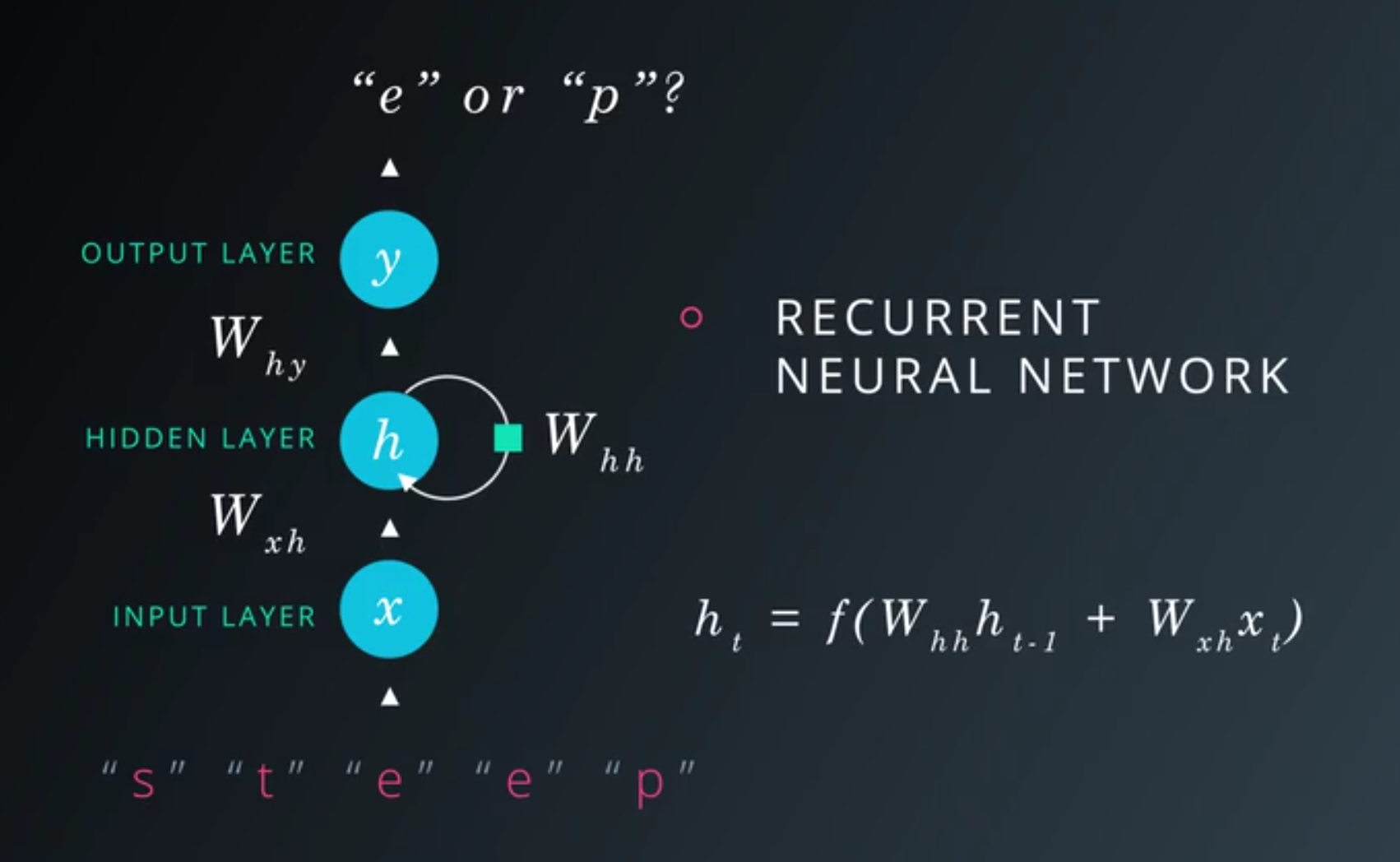
- total input of hidden layer is sum of the combinations from input layer and previous hidden layer.
- Example
- word -> characters. (steep -> ‘s’, ‘t’, ‘e’, ‘e’, ‘p’)
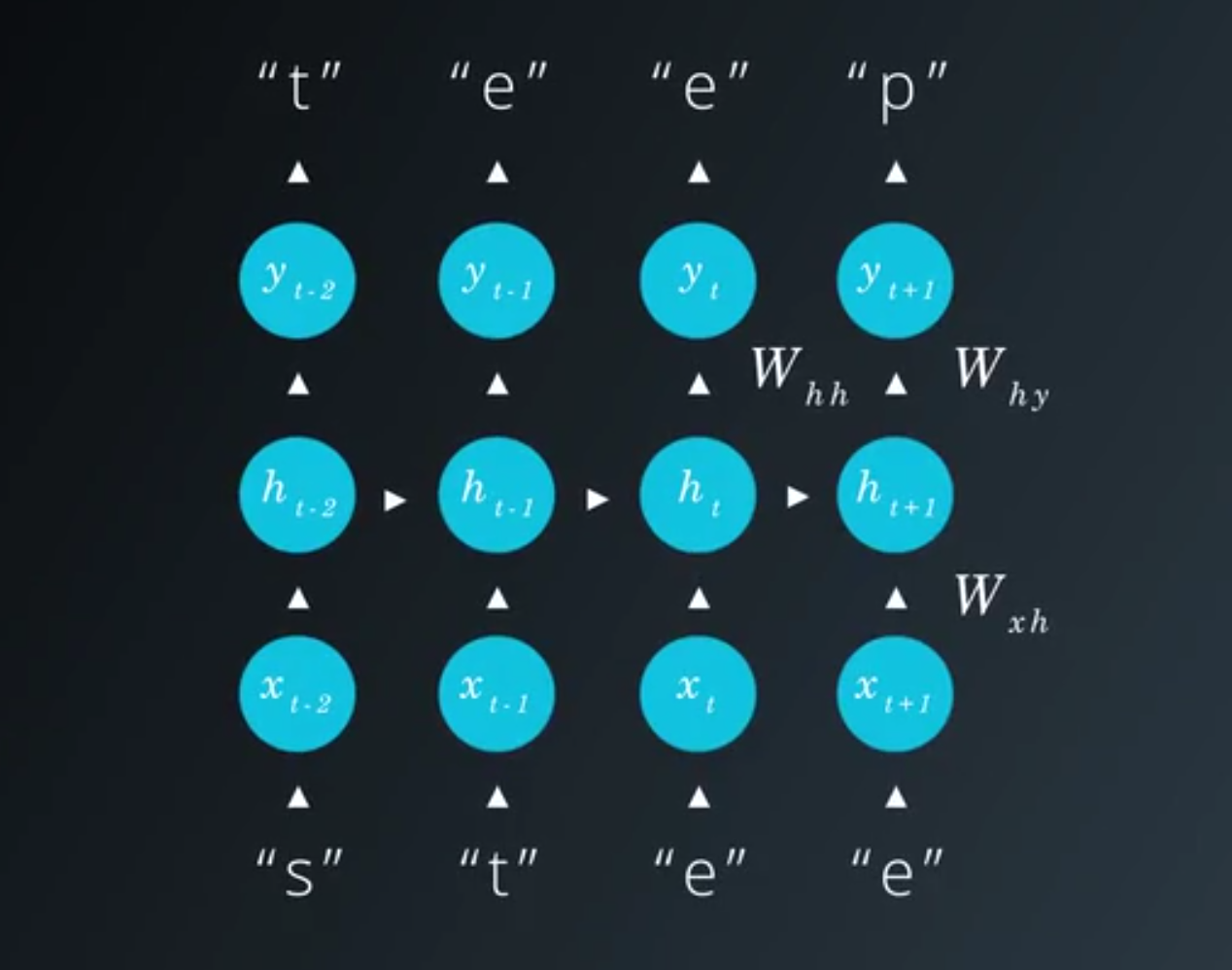
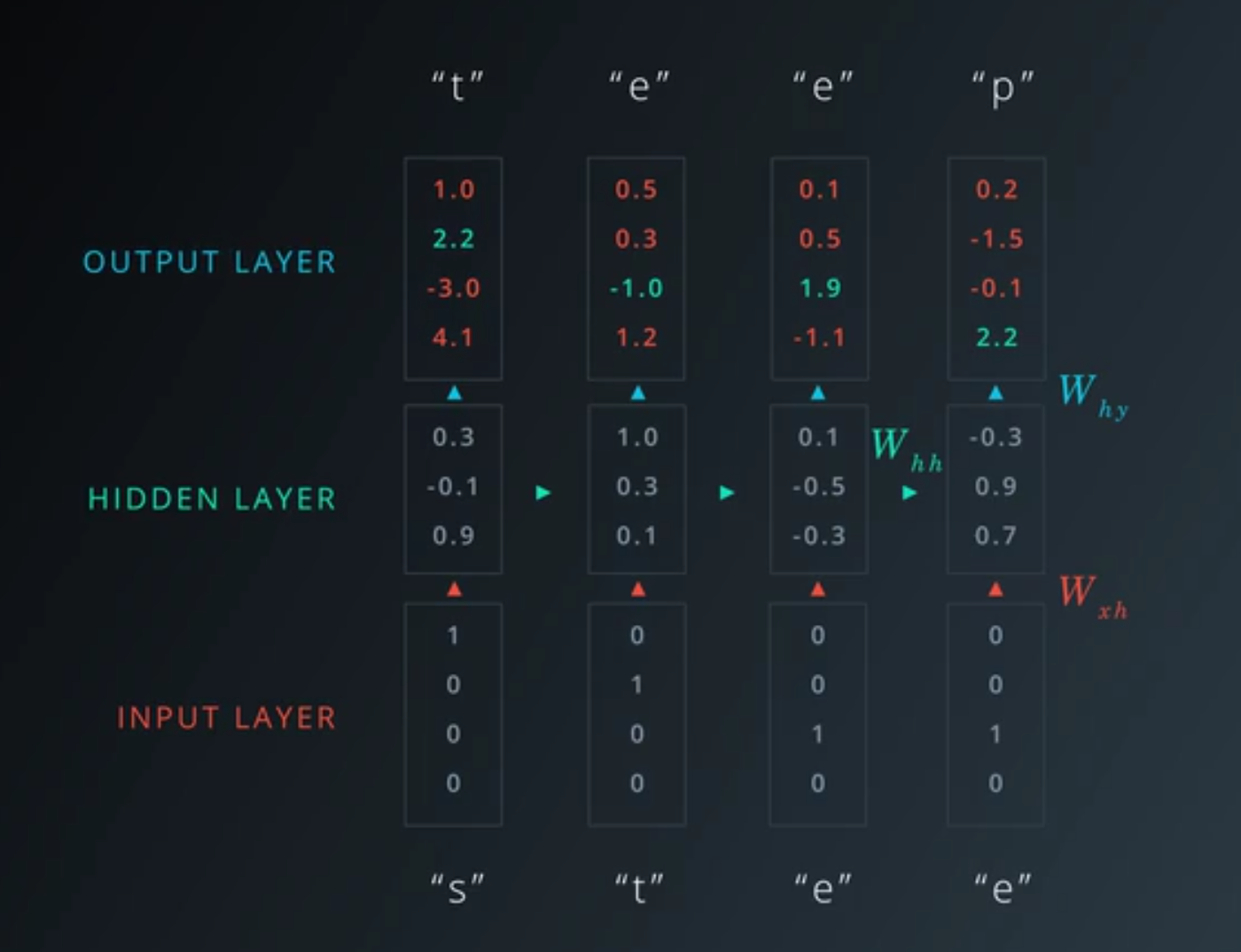
- word -> characters. (steep -> ‘s’, ‘t’, ‘e’, ‘e’, ‘p’)
LSTM
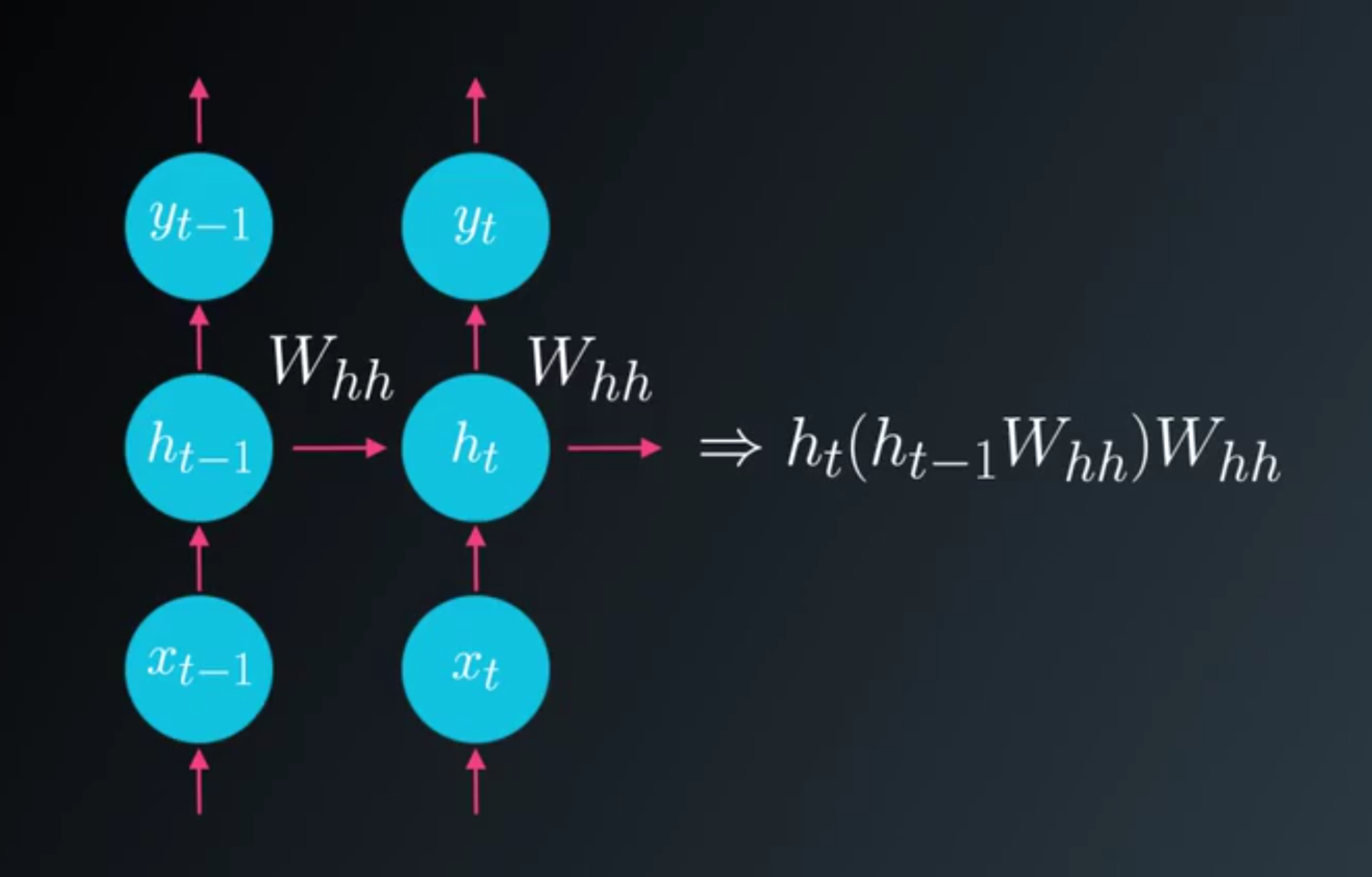
- In RNN, hidden layer multiplication leads to problem, gradient going to
- really small and vanish
- really large and explode
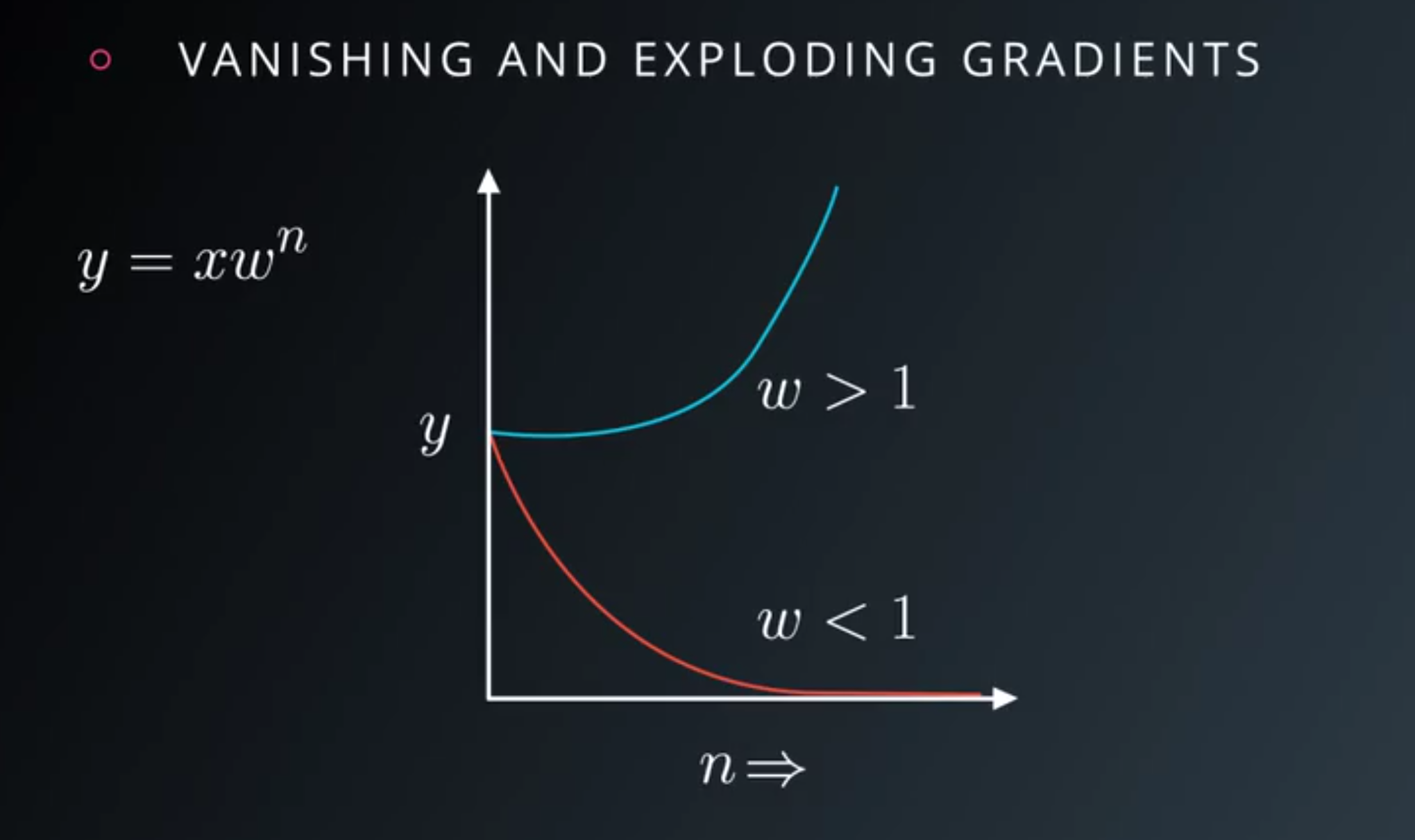
- We can think of RNN as
- bunch of cells with inputs and outputs
- inside the cells there are network layers
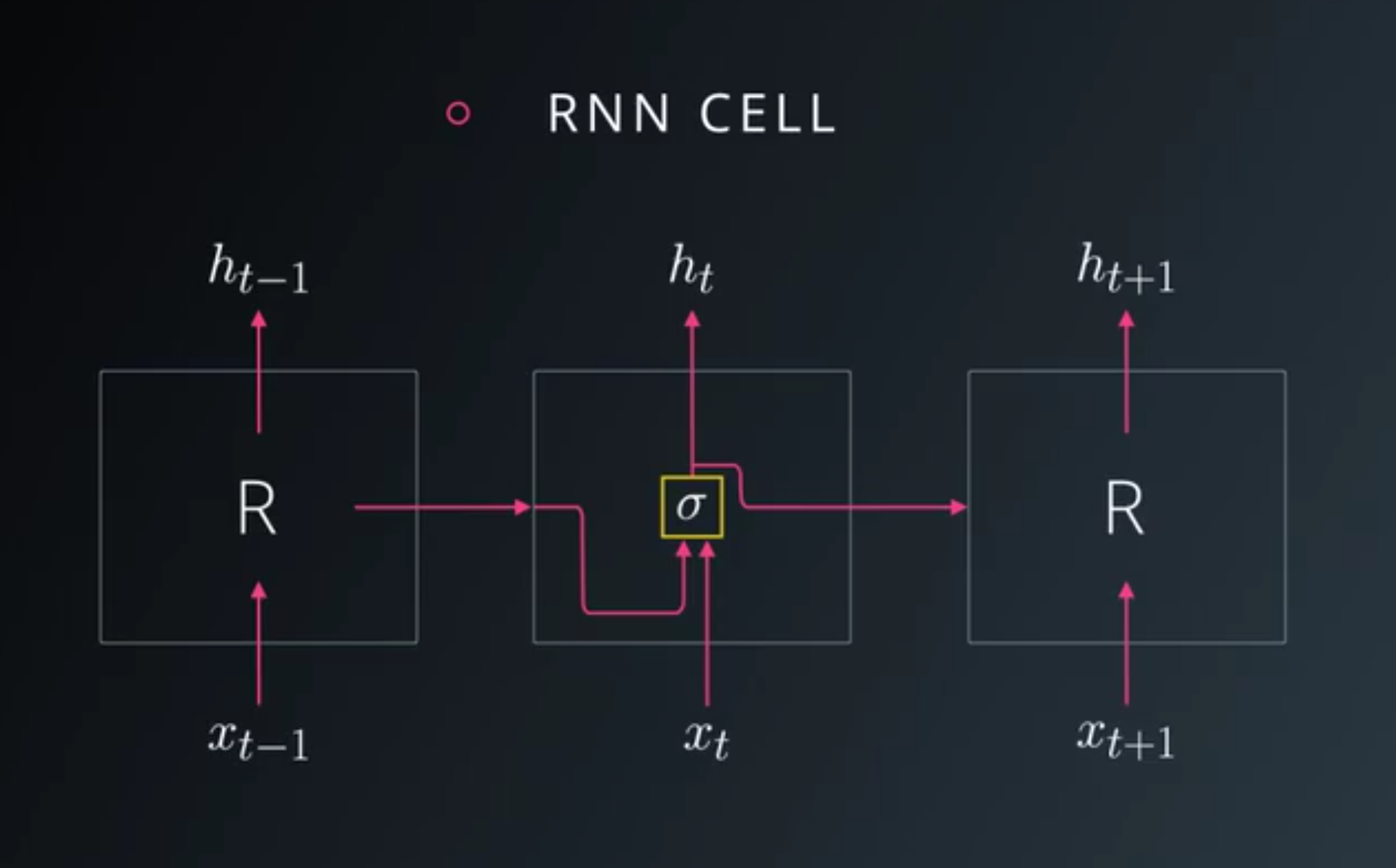
- To solve the problem of vanishing gradients
- Use more complicated cells, called
LSTM(Long Short Term Memory)
- Use more complicated cells, called
LSTM cell
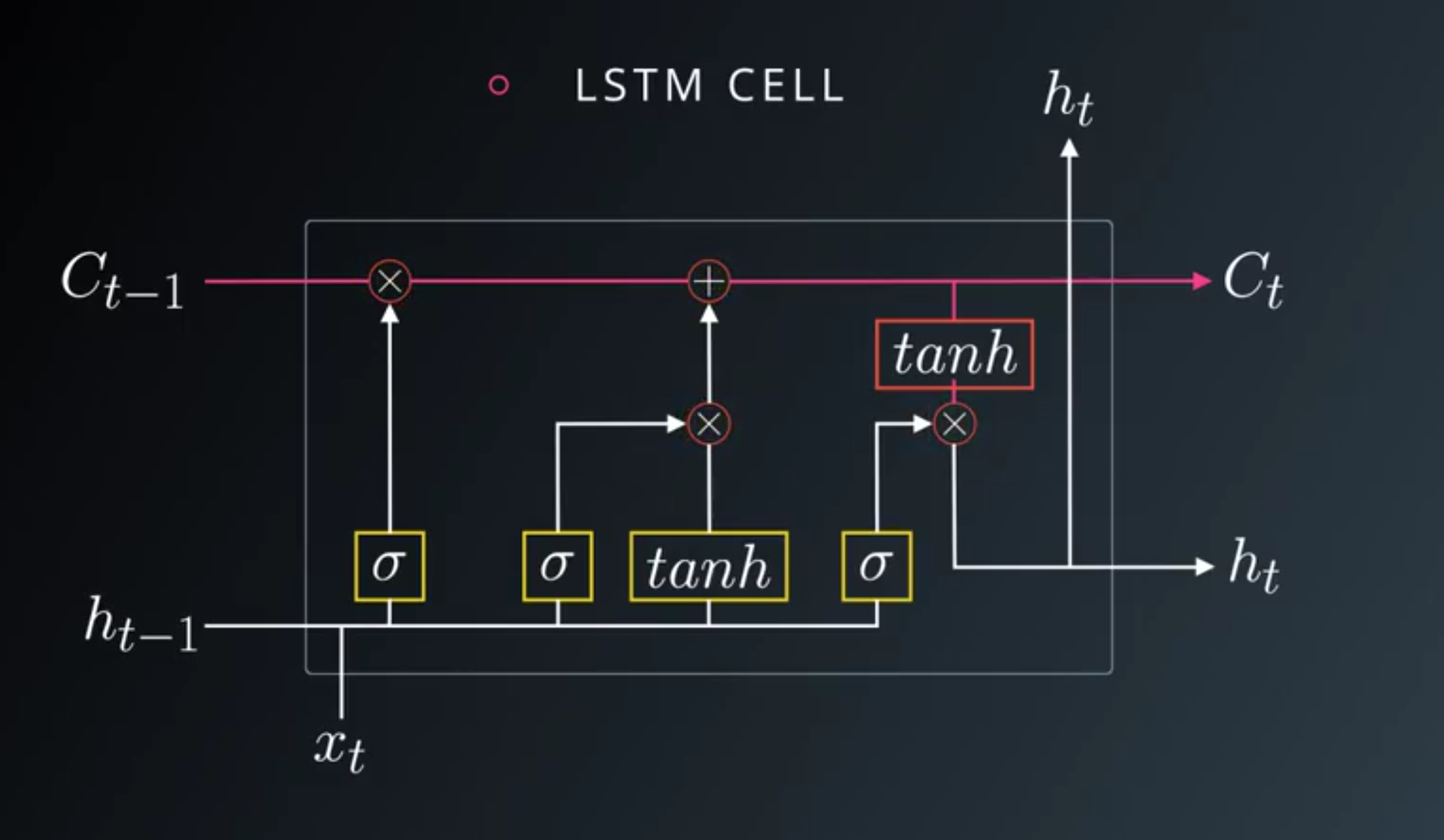
- 4 network layers as yellow boxes
- each of them with their own weights
- is sigmoid
- is hyperbolic tangent function
- similar to sigmoid that squashes inputs
- output is
- Red circles are point-wise and element-wise operations
- Cell state, labeled as
C- Goes through LSTM cell with little interaction
- allowing information to flow easily through the cells.
- Modified only element-wise operations which function as gates
- Hidden state is calculated from the cell state
- Goes through LSTM cell with little interaction
- Forget Gate
- Network can learn to forget information that causes incorrect predictions. (output: 0)
- Long range of information that is helpful. (output: 1)
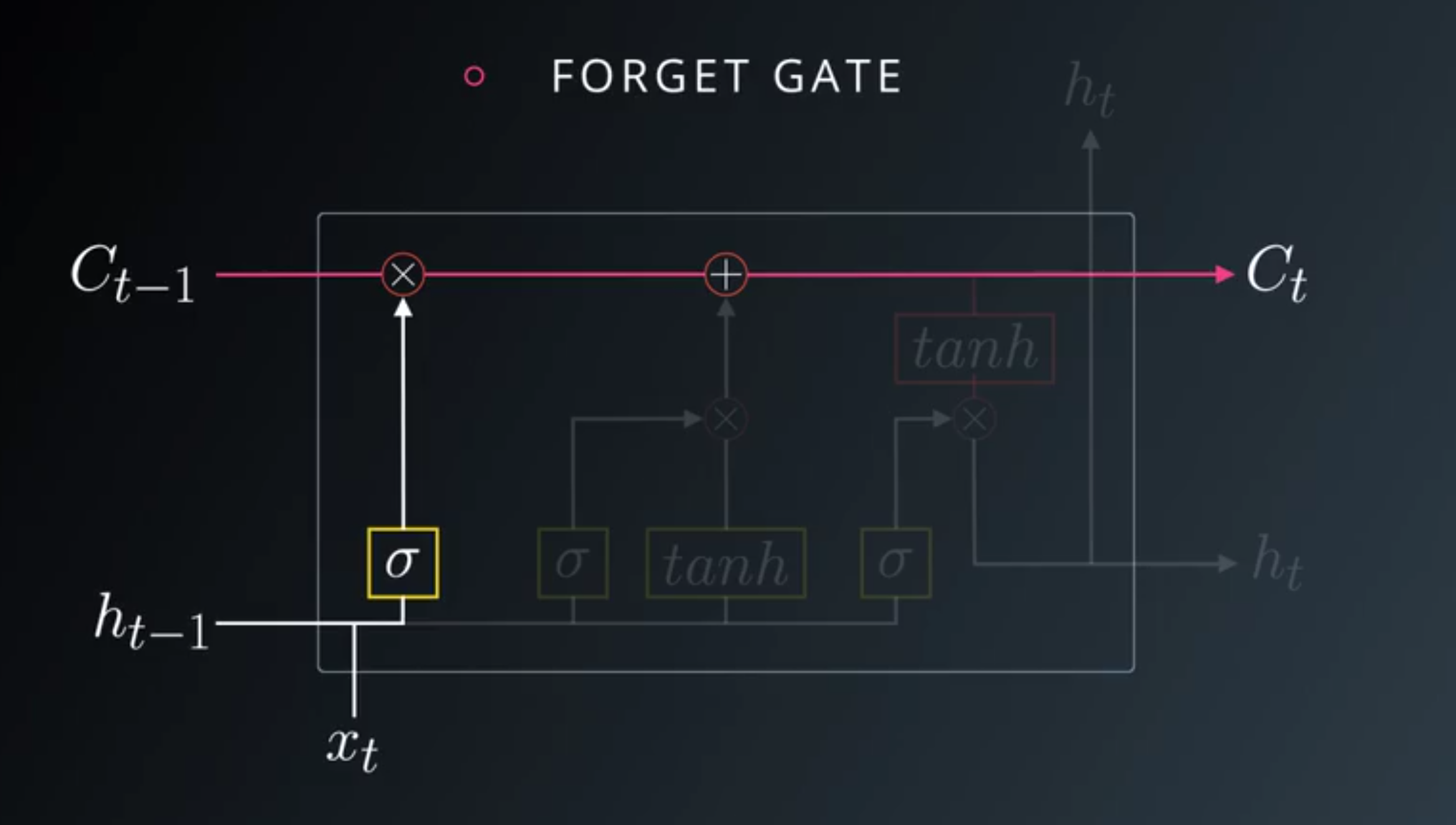
- Update State
- this gate updates the cell from the input and previous hidden state
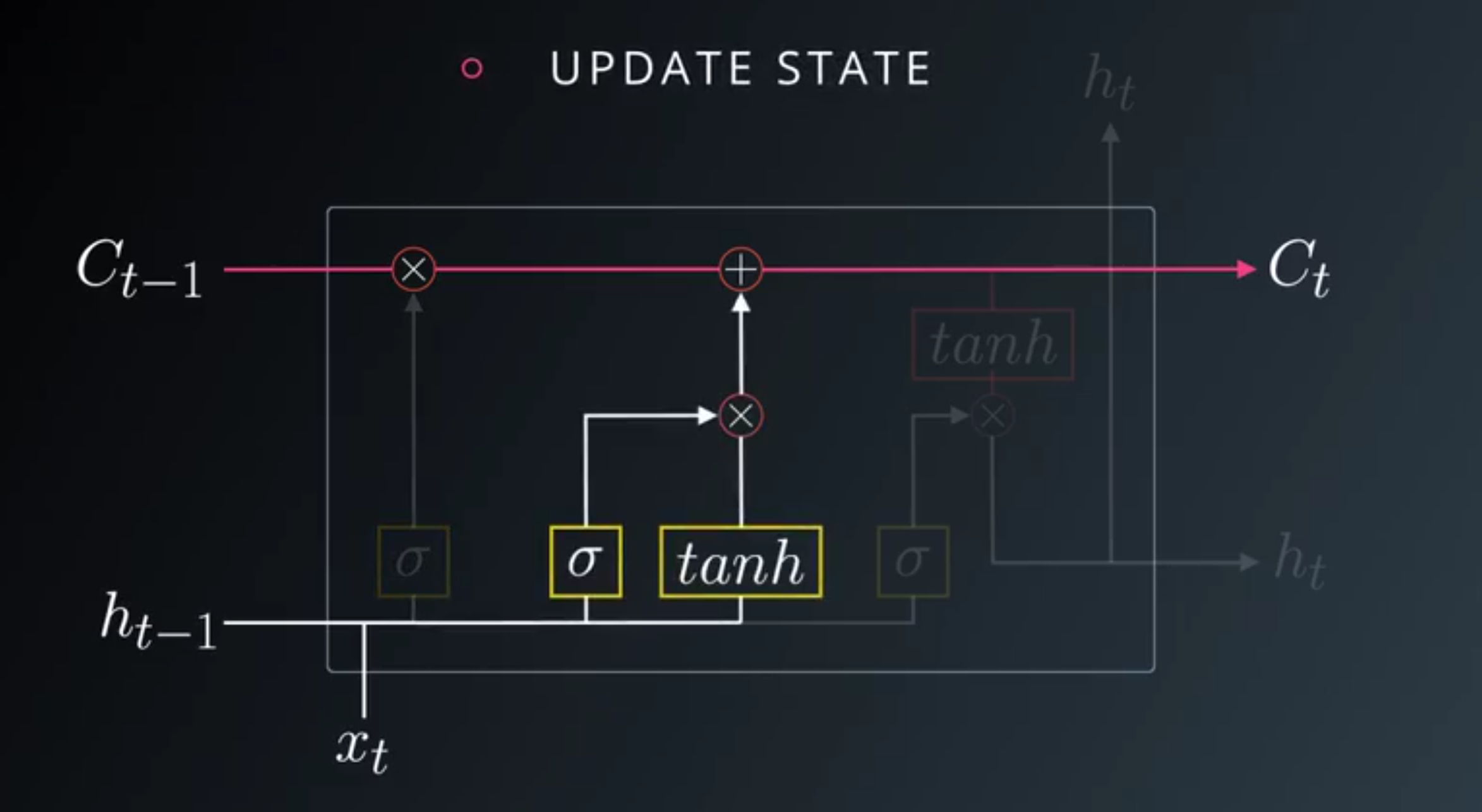
- this gate updates the cell from the input and previous hidden state
- Cell State to Hidden Output
- cell state is used to produce the hidden state, to next hidden cell.
- Sigmoid gates let the network learn which information to keep and rid of.
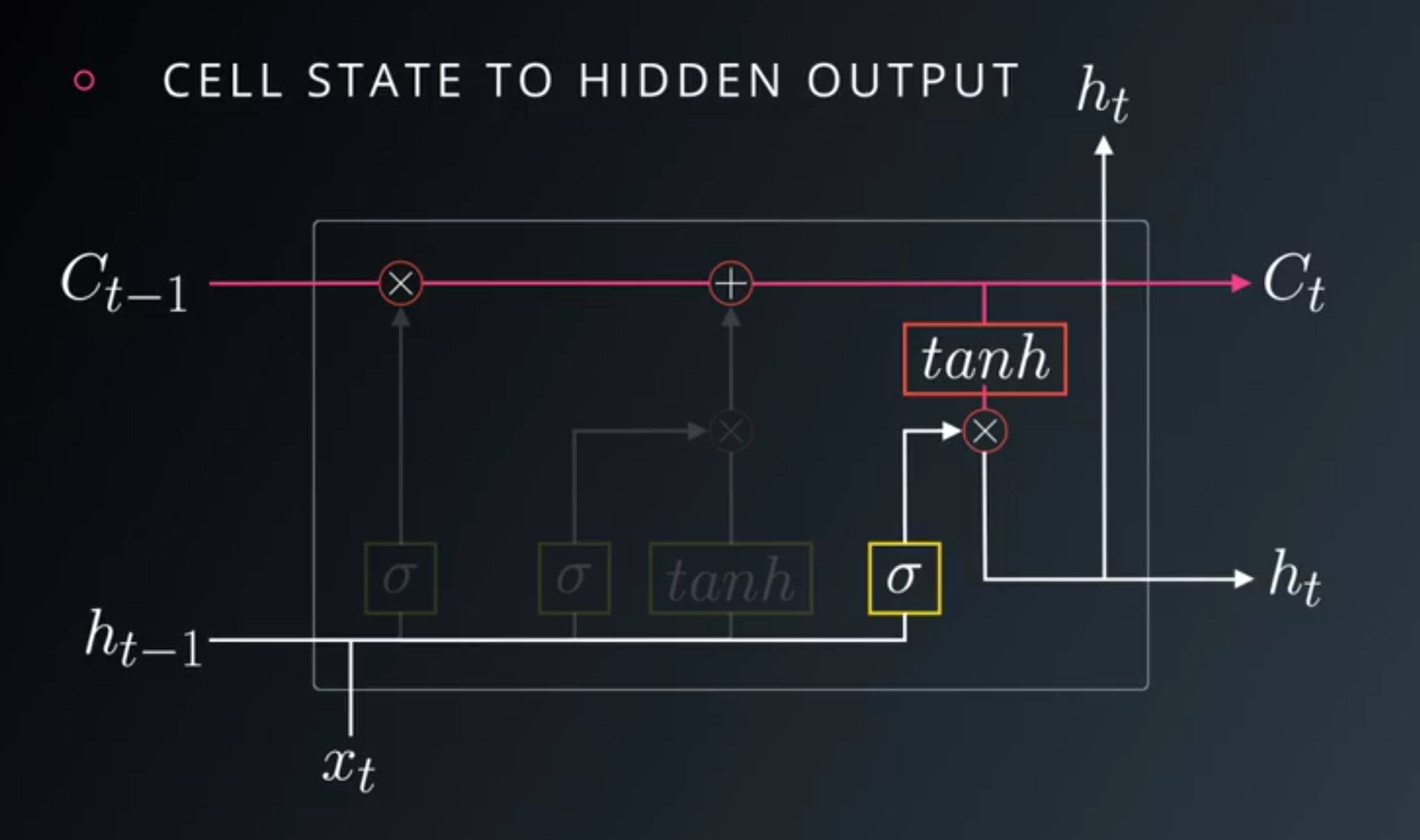
Character-wise RNN
Resources
Here are a few great resources for you to learn more about recurrent neural networks. We’ll also continue to cover RNNs over the coming weeks.
- Andrej Karpathy’s lecture on RNNs and LSTMs from CS231n
- A great blog post by Christopher Olah on how LSTMs work.
- Building an RNN from the ground up, this is a little more advanced, but has an implementation in TensorFlow.
- Understanding LSTM Networks
- LSTM Networks for Sentiment Analysis
- A Beginner’s Guide to Recurrent Networks and LSTMs
- TensorFlow’s Recurrent Neural Network Tutorial
- Time Series Prediction with LSTM Recurrent Neural Networks in Python with Keras
- Demystifying LSTM neural networks